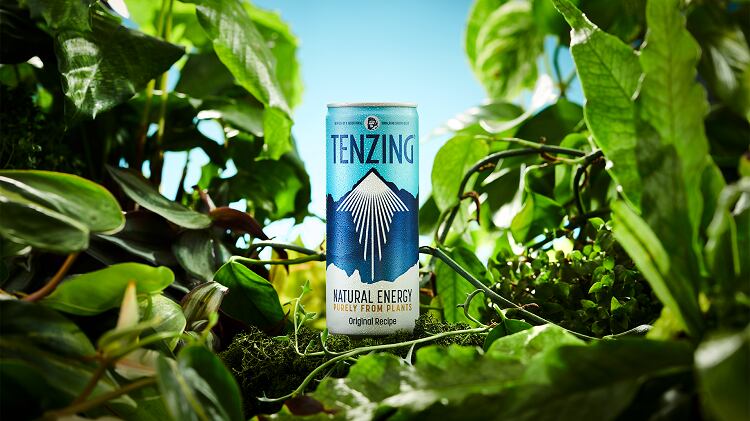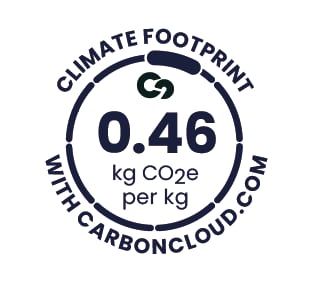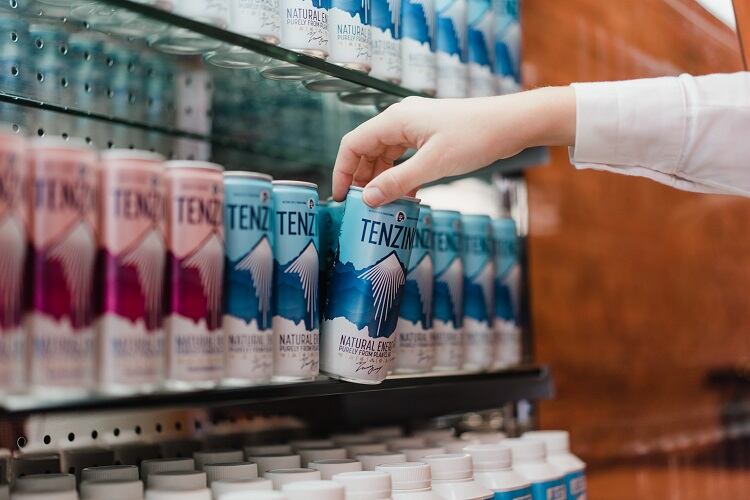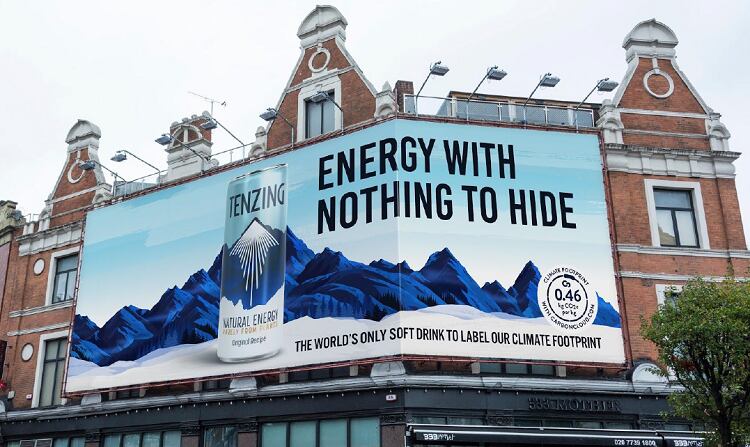The agri-food system is responsible for approximately one-quarter of all global greenhouse gas emissions.
In an effort to increase environmental transparency and mitigate carbon emissions, a small number of food and drink brands are incorporating carbon footprint labelling on-pack.
In 2019, oat drink producer Oatly introduced carbon footprint data via a partnership with CarbonCloud. In early 2020, meat alternative brand Quorn started introducing carbon footprint data, certified by the Carbon Trust, for some its products.
A few months later, in August 2020, Upfield – in partnership with Quantis – announced plans to introduce on-pack carbon labelling to 100 million packs of margarine and spreads by the end of 2021.
This month, energy drink company TENZING is joining the ranks via a partnership with CarbonCloud. The move makes the challenger brand the ‘world’s first’ soft drink to introduce carbon labelling.
From crop to can
The decision to incorporate carbon labelling responds to consumer demand, according to TENZING. The company believes shoppers want to buy more sustainable food and drink products, but without environmental impact data on pack, don’t know how.
Over the past year, the challenger brand – which prides itself on containing no artificial sweeteners, colourings, or preservatives – has worked with CarbonCloud to change this. The companies completed a full Life Cycle Assessment (LCA) to analyse the greenhouse gas emissions from ‘every stage’ of TENZING’s production, ‘from crop to can’.
This means incorporating all of TENZING’s upstream Scope 3 emissions, as well as the majority of its downstream emissions. This, founder Huib van Bockel explained, is referred to as ‘cradle to shelf’.

“With CarbonCloud, we consider all steps of the life cycle, from the production of agricultural inputs, through agriculture, production of non-agricultural ingredients, transports, processing, packaging, storage, and distribution, up until the product reaches the shelf of the grocery store.
“With the Planet Mark, we consider waste, business travel, distribution, office emissions, and homeworking.”
Measuring carbon intensity
The new label displays the carbon dioxide equivalents (CO₂e), a value which converts the varying effects of different gases into the equivalent amount of CO₂ it would take to create the same greenhouse effect, the company explained. “By using this CO₂e value, you can easily compare a drink to a piece of food, or even a car journey.”
TENZING’s Original Recipe and Raspberry & Yuzu have a footprint of 0.46kg CO₂e per kg of product. The footprint of an average canned soft drink stands at 0.49kg CO₂e per kg of product, we were told.

The most carbon-intensive element of TENZING’s production process is its packaging. Therefore, selecting the right packaging is key, we were told. There are different aspects at play, including its carbon footprint and recyclability.
“We opted for aluminium, because it is infinitely recyclable, which is vital to creating a circular economy,” said the TENZING founder. “However, due to the fact that not everybody recycles and the increased demand for aluminium at the moment, it’s nearly impossible to create a can from fully recycled aluminium.
“The good news is that if you recycle your can, you will effectively be drinking from the same can forever.”
Emissions associated from TENZING’s ingredients lists are less significant. “Although we gather some of our ingredients from all over the world, the associated emissions from this are really low,” van Bockel explained.
“Our ship-only policy is key to this, as well as ensuring all our heavyweight ingredients – like most of our juices, our beet sugar, and our water – are locally sourced.”
Offsetting emissions
TENZING is using its carbon footprint information to become carbon negative. More specifically, the company is offering a ‘local offsetting programme’, which means it is investing in offsetting projects ‘at the source of impact’.
“For example, we harvest our Green Coffee Beans in India and fund a Wind Energy project in nearby Andhra Pradesh to accelerate the countries’ shift away from coal powered plants,” explained the company founder.
“Similarly in Brazil, where we source our Guarana, we support the Ceara Renewable Energy Project, which tackles illegal logging, alleviating deforestation and greenhouse gas emissions.
“Our offsetting programme has ensured that we offset more than we emit, making TENZING a carbon negative company and the world’s first carbon negative energy drink.”

TENZING is proud to be leading the category in this regard. For van Bockel, carbon labelling is the ‘antithesis’ of ‘what all energy drinks that have gone before us would do’. “Fast cars, air races and truck rallies don’t scream: Save the planet!
“We know that people want to make a difference to their health and their impact on the planet, and so if our carbon label can help people make more sustainable decisions in-sore, then why would we not? We hope that other brands, inside and outside the energy drink market, will follow suit.”
Backing mandatory carbon labelling on-pack
Across the Channel, the European Commission is planning to roll out a mandatory, EU-wide labelling scheme by the end of 2022. While the format has yet to be revealed, it has possible that some form of carbon labelling be included in the scheme.
The UK’s voluntary traffic light system does not incorporate carbon data, but van Bockel said he would be supportive ‘without a doubt’ of a move in that direction.
“Why should the impact on your body be labelling any differently to the impact on our planet?” he told this publication.
“I believe carbon labelling should be considered just as important as nutritional labelling. The huge upside is that brands will start to compete on their carbon footprint. The lower the better. Now how good would that be?”


